Christina Dierkes
Content Strategist
dierkes.10@osu.edu
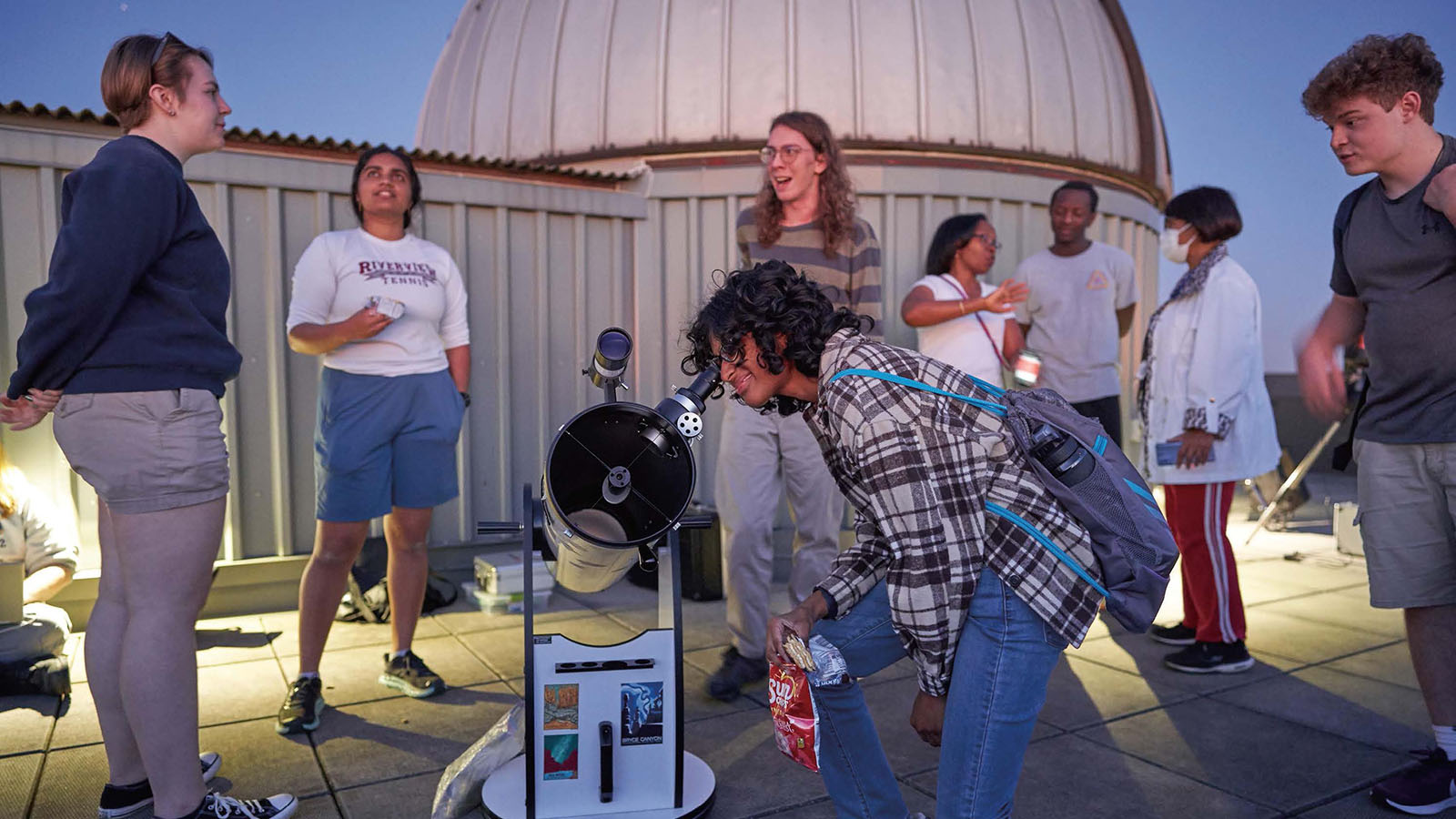
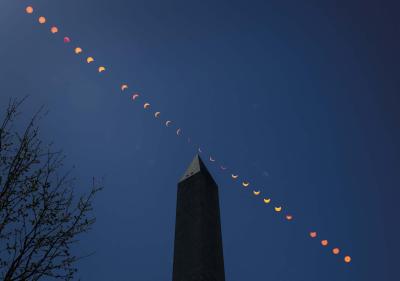
On April 8, 2024, millions of people across the United States shared an experience that only comes to this part of the world every few decades: a total solar eclipse. From large watch parties at national parks to small get-togethers in private backyards, humans in the path of totality took a break from regular life to watch the moon cover the sun and turn day into dusk. After such an experience, you may well wonder: what else is going on in the sky?
“The next eclipse that’s going to come through the U.S. is — well, if you want to go to Alaska, it’s in the 2030s,” said Wayne Schlingman, director of Ohio State’s Arne Slettebak Planetarium. “But if you want to get one in the contiguous United States, 2045 is the next big one. It cuts through Tennessee again, so we can all prepare for that. But that’s 20 years from now.”
In the meantime, the sun isn’t stopping the show anytime soon. Solar maximum, when the surface of the sun is particularly active, will occur over the next few years, meaning there will be more solar activity, more sunspots and even some northern lights as far south as Ohio and Arkansas. Schlingman recommended looking at space weather forecasts such as those available from the National Oceanic and Atmospheric Administration (NOAA) to plan for these events.

“If you want to learn more about astronomy, we have the planetarium on campus,” he continued. “We’re planning to have more public shows in the fall, and I’m working with the planetarium at Ohio State Newark to start up some night sky shows to learn how to find the bright stars and constellations.”
Additional central Ohio locations with a focus on astronomy include COSI in Columbus, as well as the John Glenn Astronomy Park in Hocking Hills and Perkins Observatory in Delaware.
“They have telescopes, they have evening programs, there’s a lot of really cool stuff down there,” Schlingman said. “You can see your fireflies, you can go hiking and then you can go stare at your stars and it’s really awesome. In the summer, you get that beautiful Milky Way because we’re looking towards the center [of the galaxy], it’s bright.”
Locations with a Focus on Astronomy
Arne Slettebak Planetarium
The Arne Slettebak Planetarium is a 63-seat, 30-foot digital dome theater located on the fifth floor of Smith Laboratory on The Ohio State University’s Columbus campus.
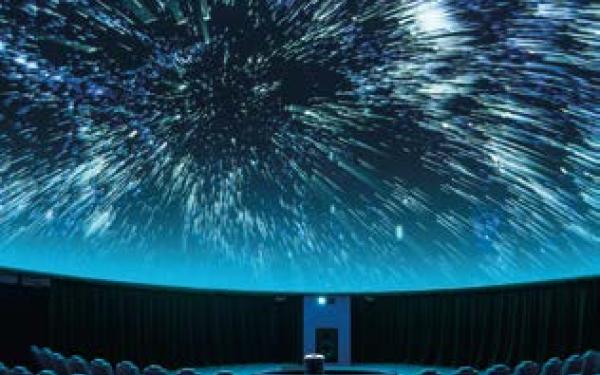
Center of Science and Industry (COSI)
The COSI Planetarium in Columbus, Ohio, is the largest in the state, featuring state-of-theart digital technology including a Digistar seven projection system and 60-foot dome.
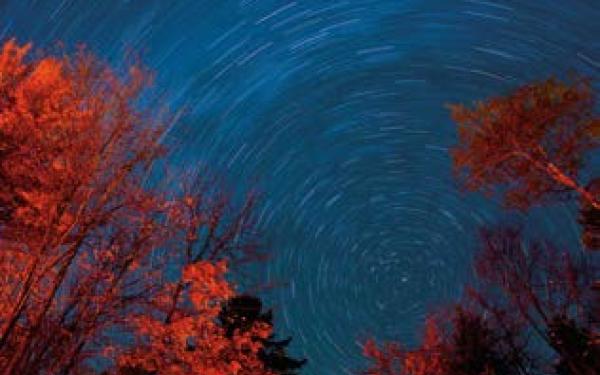
John Glenn Astronomy Park
Located in Hocking Hills, Ohio, the observatory provides a venue for visitors to the state park to experience the night sky through a large telescope and with their eyes. Camping is also available.
Locations with a Focus on Astronomy
Arne Slettebak Planetarium
The Arne Slettebak Planetarium is a 63-seat, 30-foot digital dome theater located on the fifth floor of Smith Laboratory on The Ohio State University’s Columbus campus.

Center of Science and Industry (COSI)
The COSI Planetarium in Columbus, Ohio, is the largest in the state, featuring state-of-theart digital technology including a Digistar seven projection system and 60-foot dome.

John Glenn Astronomy Park
Located in Hocking Hills, Ohio, the observatory provides a venue for visitors to the state park to experience the night sky through a large telescope and with their eyes. Camping is also available.
Closer to home in Columbus, Schlingman and some of his students host summer star parties and astronomy nights on Ohio State’s campus, as well as at the Bexley Public Library. Both undergraduate and graduate students are involved in these programs, whether they’re giving outreach talks at local schools and libraries or helping to run planetarium shows and outdoor events.
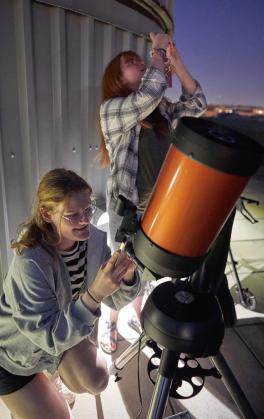
“We have a telescope club called CETA, Community Enrichment Through Astronomy. And they will just take their telescopes out on a clear night and host a star party where the students are,” Schlingman said. “So people can look at the moon, they can look at Jupiter, and they like to talk about those sorts of things.”
One important consideration for these community events, regardless of where they’re held, is accessibility. The planetarium sits on the fifth floor of Smith Lab, with a single, soon-to-be-upgraded elevator, and access to the roof for additional stargazing opportunities requires using the stairs. In the past, Schlingman and his team have taken telescopes to the plaza outside the building to host programming for those who couldn’t access the roof, and they will continue to do so.
But an additional opportunity came along in 2023 as part of a President’s Buckeye Accelerator award: then-students Caitlin O’Brien, Bella Roberts and Jacob Griffith created Solstice Outreach, a social enterprise that brings immersive, engaging planetarium shows directly to underserved populations. The group used award funds to purchase a portable planetarium — essentially an inflatable dome with a projector that can show live and prerecorded planetarium shows in schools.
Building more accessibility into Ohio State’s astronomy programs also continues to be an important concern for Schlingman.
“As we build up our new 20-inch telescope, there’s going to be cameras on it. And we can take whatever the finder is looking at — that’s the small telescope on the side with the camera, which is going to see way more than your eyeball can see through the big one anyway — we’re going to be able to pipe that downstairs into the planetarium,” Schlingman said. “We’ll have it on a big TV screen, so people can interact with it, and they can see it. This is a cheaper and better option for providing the exact same programming that we would have upstairs for anybody who needs ADA accessibility, and we’ll be able to use that in the future to meet additional needs in the community. It’ll be pretty awesome.”
